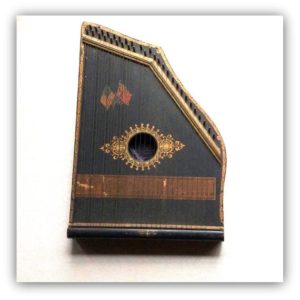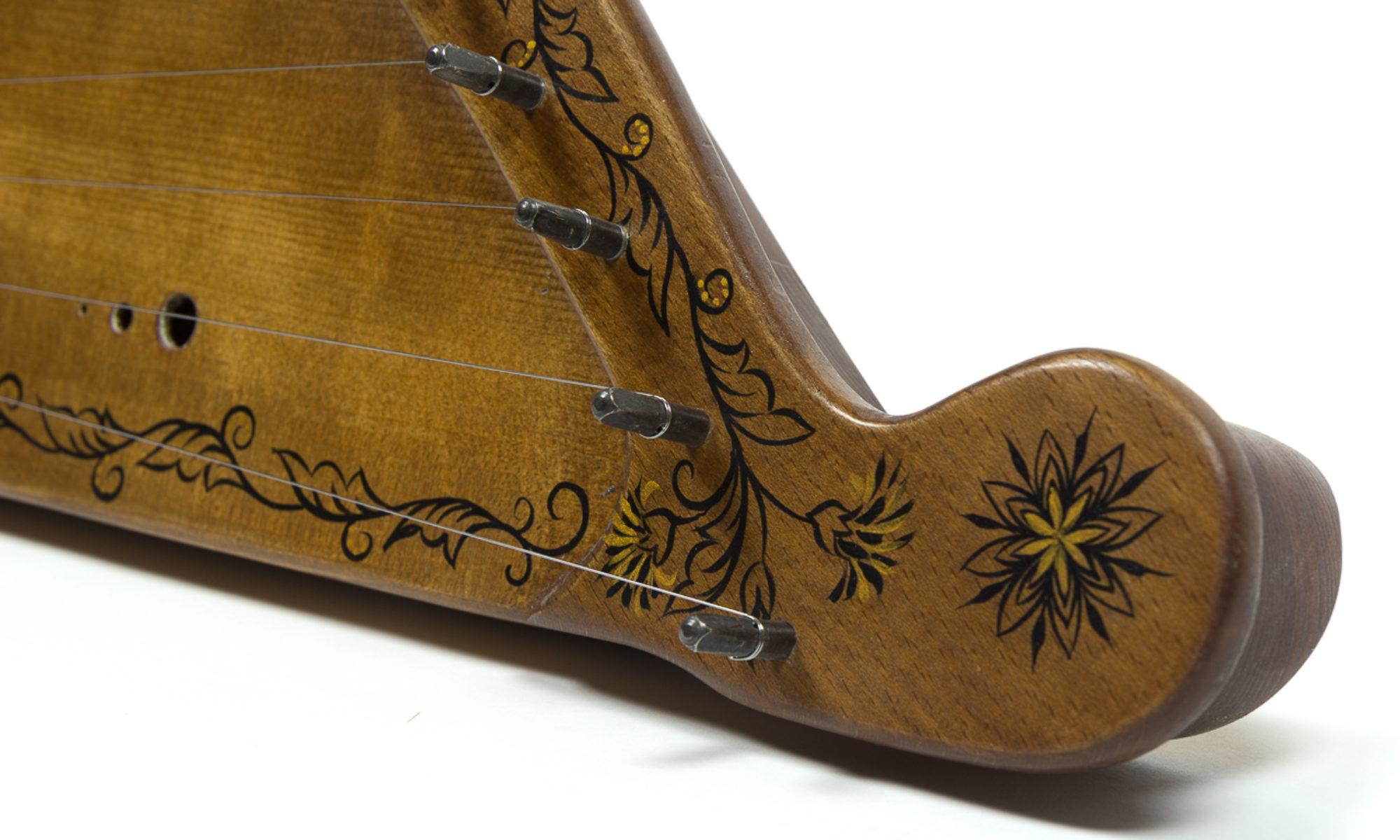The concert zither is a modern instrument although the name has been applied to many other instruments though the ages. The zither evolved as a folk music instrument in Bavaria and Austria and, at the beginning of the 19th century, was known as a Volkszither. Its counterparts were the Hummel in Sweden, the Langeleik in Norway and the Noordsche Balk in Holland. All of these instruments were played with the instrument lying on th e table and consisted of strings attached to a sounding board with a series of frets underlying several of the strings. The zither is played by stopping the frets with the fingers of the left hand and striking these strings simultaneously with a plectrum attached to the thumb of the right hand while the other fingers of the right hand pluck the remaining strings.
e table and consisted of strings attached to a sounding board with a series of frets underlying several of the strings. The zither is played by stopping the frets with the fingers of the left hand and striking these strings simultaneously with a plectrum attached to the thumb of the right hand while the other fingers of the right hand pluck the remaining strings.
The Volkszither that existed in the beginning of the 19th century had four melody strings and fifteen or less accompaniment strings. There was no uniformity in the tones of these strings and this haphazard arrangement made it impossible to play in more than two or three keys. Johann Petzmayer (1803-1884), a native of Vienna, became one of the outstanding virtuosi on this primitive type instrument. Petzmayer’s contribution to the growth of the zither was assured when Duke Maximilain of Bavaria became so enamored of Petzmayer’s playing that he decided to take lessons on the instrument under Petzmayer’s tutelage. Petzmeyer then became court musician and together with Duke Maximilian toured Europe and the Near East where both performed on the instrument. The result was a rapid increase in the popularity of this instrument among all strata of society, not excluding royalty. Elizabeth, empress of Austria, Marie, queen of Naples, Crown Princess Alexandra of England, Princess Beatrice of Wales, were among those who became enthusiastic performers on the zither.
But the response of the professional musicians did not materialize. The reason is not difficult to determine. The Volkszither was still a primitive instrument and was limited in its range, although its sound was such that it won enthusiastic acclaim from all who heard it. Although it was Petzmayer (1803-1884) who made the zither a household instrument, it was Nikolaus Weigel (1811-1878), a native of the Palatinate and subsequent resident of Munich, who conceived the stringing of the zither (1838) that converted it into a concert instrument. It was he who introduced the chromatic scale onto the fingerboard and who arranged the accompaniment strings in the sequence of fifths. However, his reforms were not universally accepted until considerably later. Max Amberger, an instrument maker in Munich, fabricated the first concert zither in 1862 based on Weigel’s revolutionary design. It is this instrument with its 5 melody strings (a, a, d, g, c) covering 29 frets along with 37 accompaniment strings that constitutes the concert zither. With its 187 basic tones, the zither has a greater range than the piano with 88 keys or the guitar with 136 notes. The older forms of the zither were limited to 2 or 3 key signatures and as a result were never taken seriously as concert instruments by the great composers. But this late maturation of the zither did not prevent the creation of a body of classical music specifically composed for the instrument by virtuosi who had mastered its techniques. These composers, called the “Altmeister”, flourished from 1870-1910 and by their creativity developed the full potential that lies within the compass of this instrument.
The zither has been traditionally known as a folk-instrument. In this guise it has been the interpreter par excellence of the Viennese songs associated with the Heuriger inns, where a green branch placed in front of the inn announces to all that this year’s wine, the Heurigen, is ready for consumption. The zither has also been the traditional instrument of the Bavarian Alps. Composers and virtuosi of the calibre of Hans Drechsel, Georg Freundorfer, Rudi Knabl and countless others have incorporated Bavarian Gemuetlichkeit into their volkstuemliche compositions.
But more important still is that the zither need not be fettered to any one tradition for it has the ability of eliciting a sympathetic response in its rendition of songs of all cultures and all ages if they are songs that express a romantic charm or ideal.

